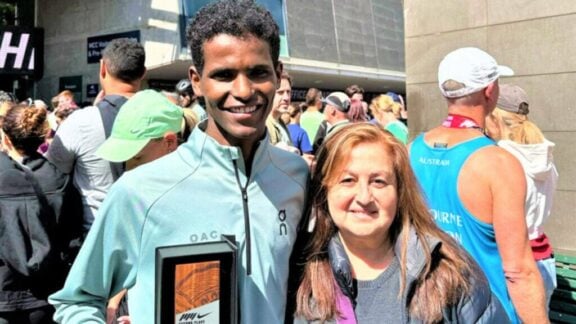Traditional physical therapy can often feel monotonous, unexciting – just plain boring.
But what if therapy exercises became engaging, more entertaining, blurring the line between play and therapy.
Stasism, a social online platform that pioneers therapeutic physical video games, assessments, exercises, and virtual personal trainers with a specific focus on individuals with Cerebral Palsy, explores the potential of turning this idea into a reality.
“As everybody knows and also research shows, everybody hates physiotherapy and people in general don’t do it, unless they are forced to,” says Stasism’s CEO, Kjetil Helland to Neos Kosmos.

Stasism: Incorporating gaming into therapy
By incorporating therapeutic elements into video games, Stasism encourages physical exercise and progress, while targeting specific motor skill development.
It seeks to enhance motor skills, balance, and coordination for people of all ages and abilities, helping people improve their physical abilities in the comfort of their own homes, or in clinical settings.
The recently announced partnership with the International Federation of Cerebral Palsy Football (IFCPF), is a step towards inclusion and new opportunities for people with Cerebral Palsy and neurological conditions.
The science-based platform is a product of a “multidisciplinary and multicultural,” effort, led by experts from diverse backgrounds, and represents the of “over six years of research and development,” said Stasism’s CEO, Kjetil Helland.
An AI system that adapts to your physical abilities and skill level
According to Helland, the platform uses “AI, machine learning to make the entire system automatically adapt to each individuals’ physical abilities and skill level.”
It offers many features so users can customize their therapy, and target specific body parts, or follow pre-made training programs designed by therapists or doctors.
The platform also provides a selection of popular games such as Minecraft, Call of Duty, Roblox, and Pinball Flipper, each designed to target different body parts, ranging from individual fingers to full-body exercises. Users can control the games using different body parts, including fingers, hands, shoulders, head, torso, legs, arms, and eyes.
This allows for immersive gameplay with three-dimensional movements, including forward and backward motions.
To assist doctors and therapists in evaluating their patients, the system incorporates scientific assessments, tools, and virtual personal trainers that provide guidance during exercises.
All session data is stored in the platform, thus allowing for a comprehensive analysis of users’ movements, which can be shared with therapists, or used by individuals themselves to identify any areas of concern.

Creating opportunities for individuals with Cerebral Palsy and other neurological conditions
Stasism has announced a partnership with the International Federation of Cerebral Palsy Football (IFCPF), the global governing body for Cerebral Palsy Football and Frame Football.
Their joint mission is to promote inclusion and create new avenues of opportunity for individuals with Cerebral Palsy and related neurological conditions.
“At Stasism, we take immense pride in being the world’s first social online platform dedicated to therapeutic physical video games, assessments, exercises, and virtual personal trainers specifically designed for individuals with Cerebral Palsy.
“Our unique expertise and platform will play a pivotal role in enhancing participation in football activities, both online and in-person,” said Sofia Tsimidopoulou, Stasism communications manager.
The initiative aims to measure variables and generate accurate data, laying a foundation for higher standards for all individuals.
Helland believes the classification experts are enthusiastically embracing this approach, and sees the opportunities it presents. He goes further by underscoring the advantages of computer-based technology for remote classification exercises. The program removes the need for individuals to be physically present for classification, which can often be a time-consuming process and prone to error.

The benefits of remote therapy
Helland stresses, that remote treatment also addresses the issue of global shortage of doctors and therapists, or the long waiting lists for patients, resulting in limited accessibility to therapy.
This approach aims to eliminate the requirement for in-person appointments, which often involve time-consuming preparations, travel, and result in a significant portion of the day dedicated to a brief session.
Remote treatment offers convenience and efficiency, enabling patients to engage in therapy at their own pace and in the comfort of their homes.
It’s all about fun
Hellland, places great emphasis on the power of motivation, saying that “if you have fun then your quality of life will improve by those simple terms.”
By creating a virtual environment, where users can set goals, earn rewards, express themselves, connect with others, and explore a virtual world, he seeks to promote social interaction, personal growth, and inclusivity for all users, regardless of their disabilities or limitations.
Helland wants to offer support and services to individuals with a wide range of disabilities and while he acknowledges that it may not be feasible for all and for all disabilities the CEO, believes in incorporating a motivational and holistic approach, to provide a fun therapeutic experience to all.










